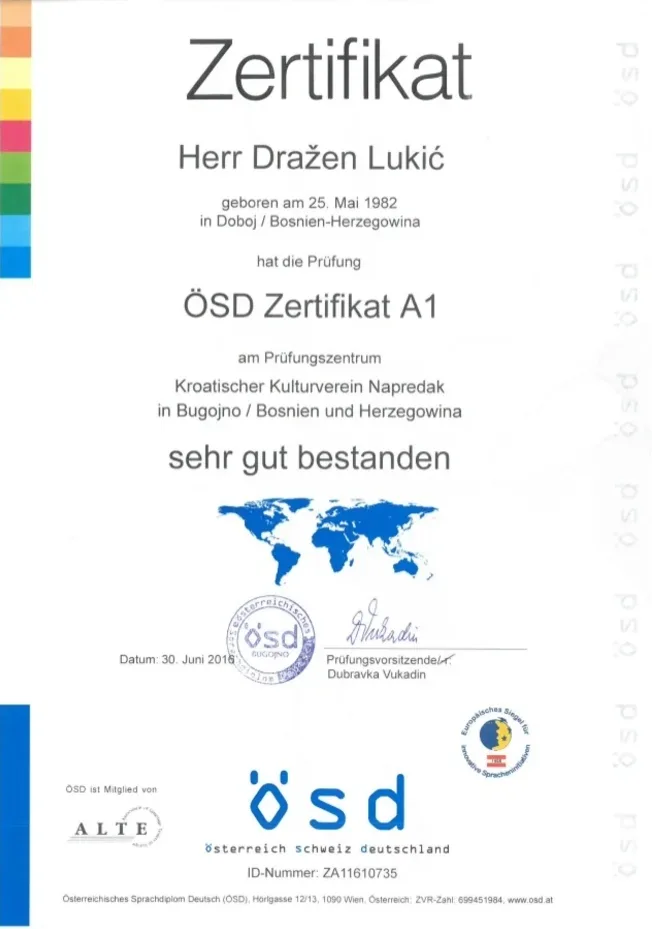Understanding the ÖSD Certificate: Your Gateway to German Proficiency
In a progressively globalized world, proficiency in multiple languages is a valuable asset. For those thinking about the German language, the ÖSD (Österreichisches Sprachdiplom) certificate stands apart as an acknowledged credentials. This post digs into what the ÖSD certificate is, its significance, the structure of the examinations, preparation tips, and answers to regularly asked questions.
What is the ÖSD Certificate?
The ÖSD certificate is an official language certificate provided by the Österreichisches Sprachdiplom Deutsch, or the Austrian Language Diploma in German. It examines the language efficiency of non-native speakers and sticks to the Common European Framework of Reference for Languages (CEFR). The ÖSD licenses language abilities ranging from A1 (novice) to C2 (proficient), covering 4 key competencies: reading, composing, listening, and speaking.
Value of the ÖSD Certificate
Getting an ÖSD certificate holds significance for different factors:
Educational Opportunities: Many universities and academic institutions in German-speaking nations require proof of German language proficiency for admission. The ÖSD certificate serves as valid proof of a candidate's language skills.
Work Prospects: In a competitive job market, a recognized language certificate can improve a prospect's employability, especially in functions requiring German as a main language.
Migration Requirements: Some immigration procedures in German-speaking nations demand language proficiency certificates. The ÖSD is extensively accepted by numerous authorities, making it a crucial property for those transferring to Austria or Germany.
Structured Learning: Preparing for the ÖSD certificate motivates learners to develop a well-rounded understanding of the language, helping in both academic and daily interaction.
Structure of the ÖSD Exam
The ÖSD certificate includes various levels of assessment, lining up with the CEFR. The examination structure includes the following parts:
Levels Offered:
A1: Beginner
A2: Elementary
B1: Intermediate
B2: Upper Intermediate
C1: Advanced
C2: Proficient
Components of the Exam:
The ÖSD examinations are developed to examine the following language skills:
Listening Comprehension: Candidates listen to audio excerpts and address concerns to show understanding.
Checking out Comprehension: This involves reading passages and responding to concerns to show analysis and comprehension.
Composing: Test-takers take part in composed jobs, such as making up letters or essays, to show their ability to articulate thoughts on paper.
Speaking: In this area, candidates take part in discussions or monologues, showcasing their spoken interaction abilities.
Exam Format:
Tests can take various formats, including:
Paper-based: Traditional evaluations carried out face to face at designated testing centers.
Computer-based: Digital examinations readily available in some areas, offering flexibility and convenience.
Getting ready for the ÖSD Exam
Preparation for the ÖSD certificate requires a structured approach. Here are some reliable strategies:
Setting Up a Study Plan:
Examine Your Level: Determine your present efficiency level through practice tests.
Set Goals: Establish clear, attainable objectives for each language skill (listening, reading, writing, speaking).
Daily Practice: Allocate time each day for language research study and practice different skills to build a detailed command of German.
Resources for Study:
Language Courses: Consider registering in language courses, either in-person or online, particularly created for ÖSD preparation.
Textbooks and Workbooks: Utilize materials that align with the CEFR levels and cover all 4 proficiencies.
Online Platforms: Websites, apps, and online forums supply interactive exercises and community support.
Test Exams: Familiarize yourself with the test format by practicing with sample questions and previous exams.
Engaging with ösd a2 :
Immerse Yourself: Surround yourself with the language through music, movies, and podcasts.
Language Exchange: Partner with native speakers or classmates to practice conversational skills.
Join Study Groups: Collaborating with peers can cultivate an encouraging knowing environment and enhance inspiration.
Frequently Asked Questions (FAQs).
1. How long does the ÖSD certificate stay legitimate?
The ÖSD certificate does not have an expiration date, but candidates are encouraged to update their skills occasionally, specifically for professional or academic purposes.
2. Where can I take the ÖSD exam?
The ÖSD tests are administered at various certified evaluation centers worldwide. A list of places can typically be discovered on the official ÖSD website.
3. How much does the ÖSD exam cost?
Exam fees differ by location and level. It is recommended to examine with regional testing centers for precise rates.
4. Can I retake the ÖSD exam if I do not pass?
Yes, prospects can retake the exam as numerous times as necessary to attain their preferred proficiency level.
5. Are there specific study products recommended for the ÖSD certificate?
While no main materials are mandated, it is helpful to utilize books customized to language efficiency exams and carry out practice tests.
Conclusion.

The ÖSD certificate functions as a reliable benchmark of German language efficiency, opening doors to instructional, professional, and immigration chances. With a well-structured preparation strategy, committed practice, and the best resources, aspiring candidates can improve their language abilities and embark on an effective journey in mastering the German language. Whether for profession advancement or personal enrichment, the ÖSD certificate represents a substantial step towards becoming skilled in German.
